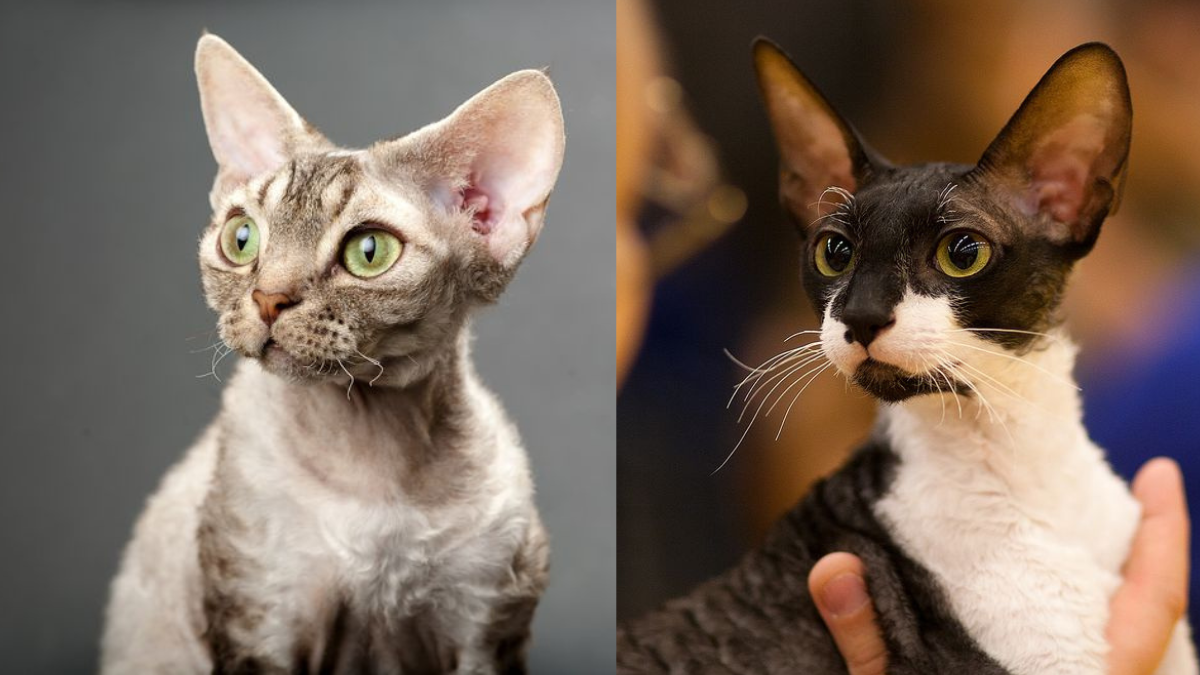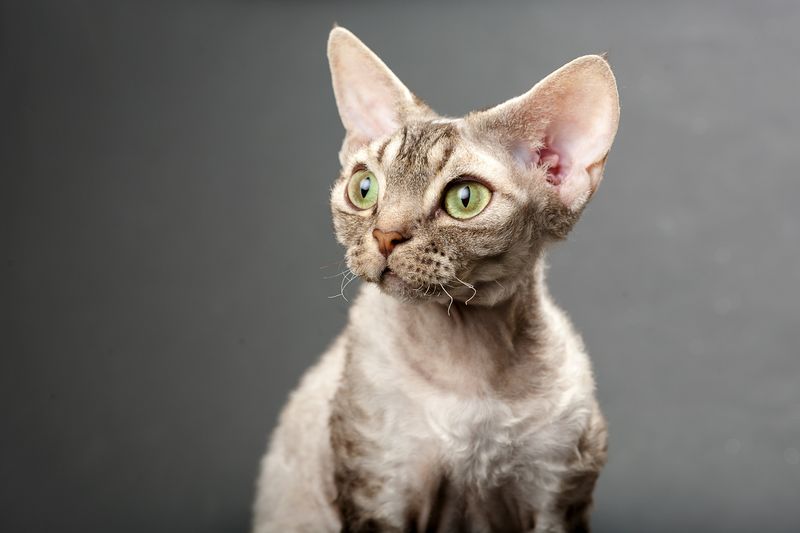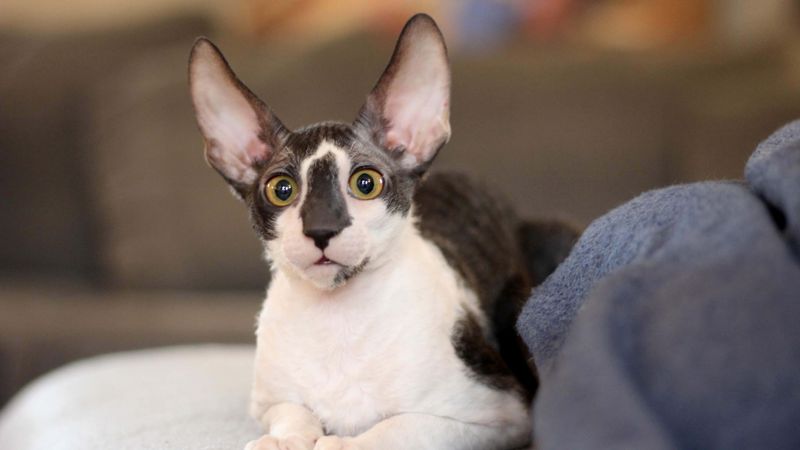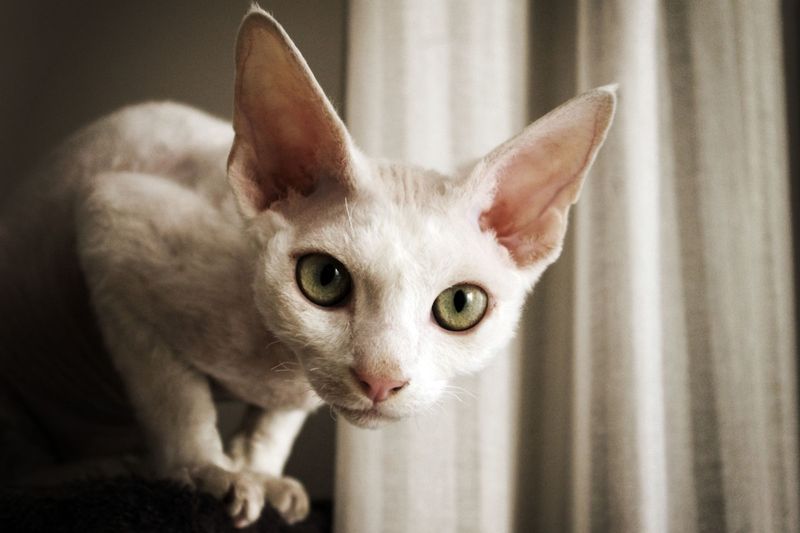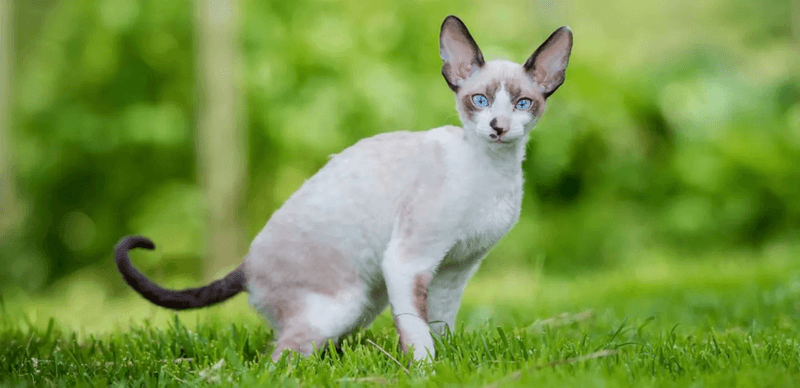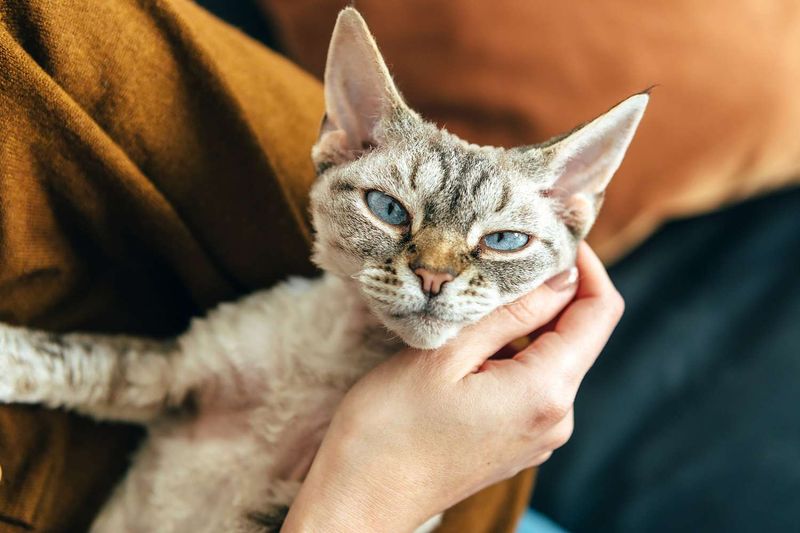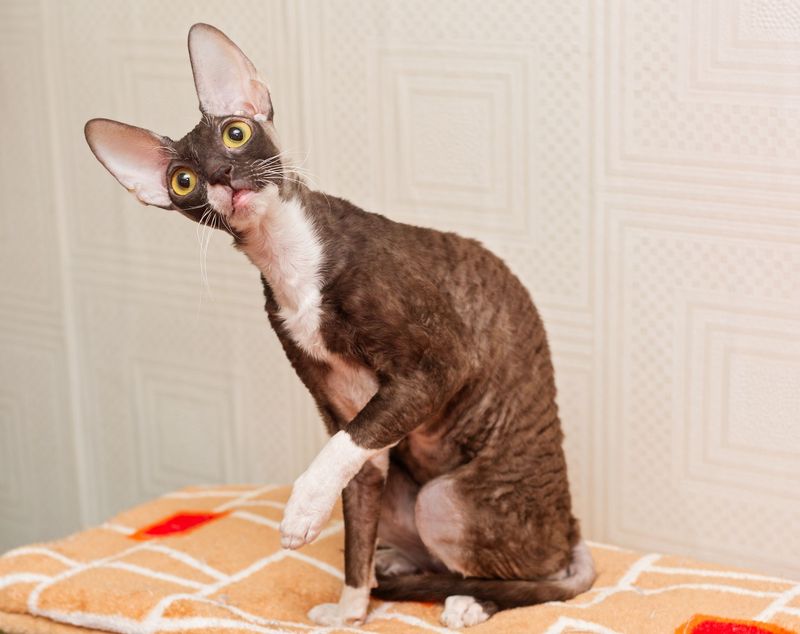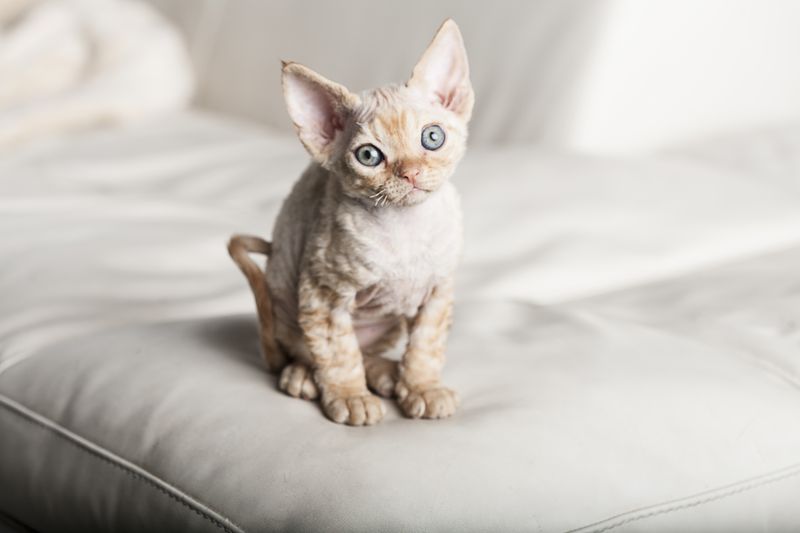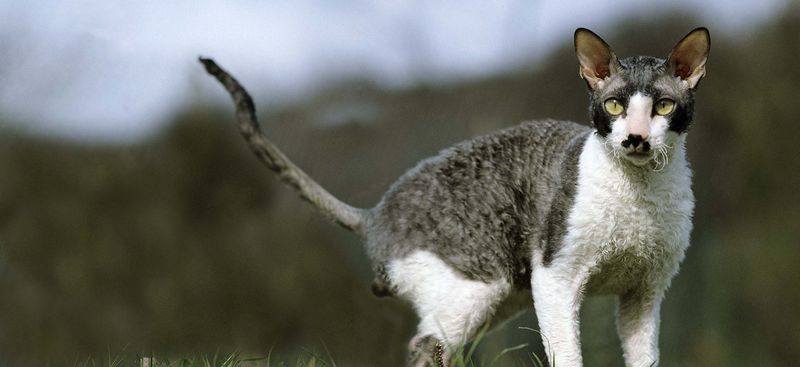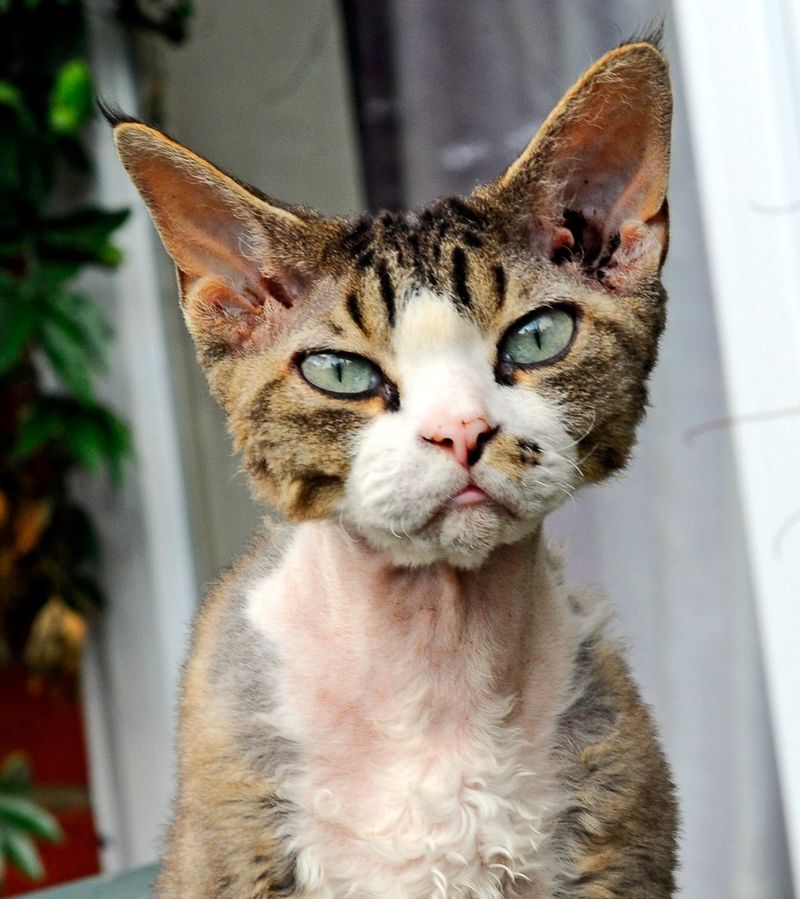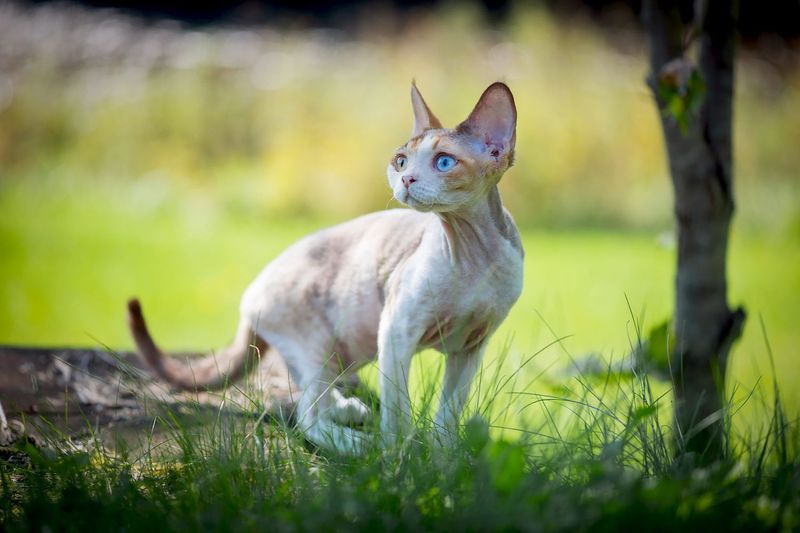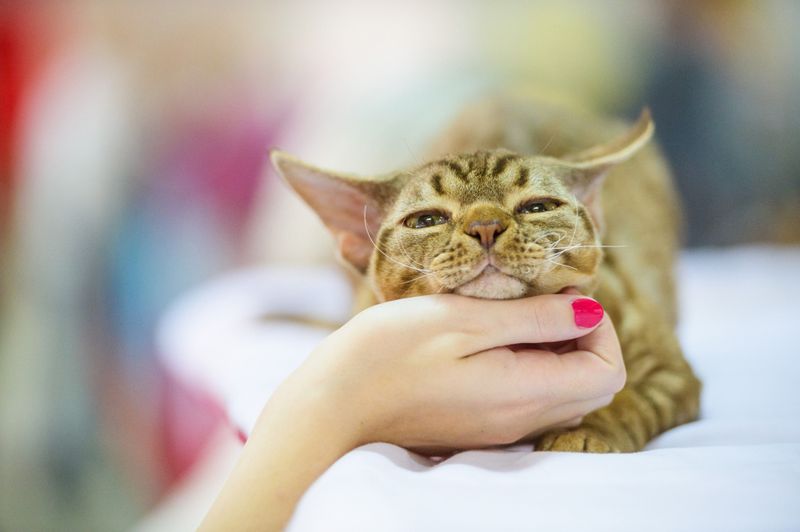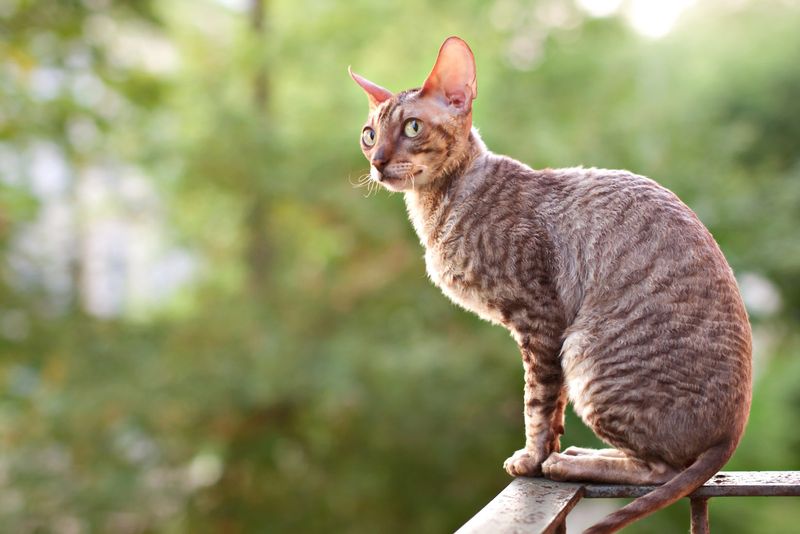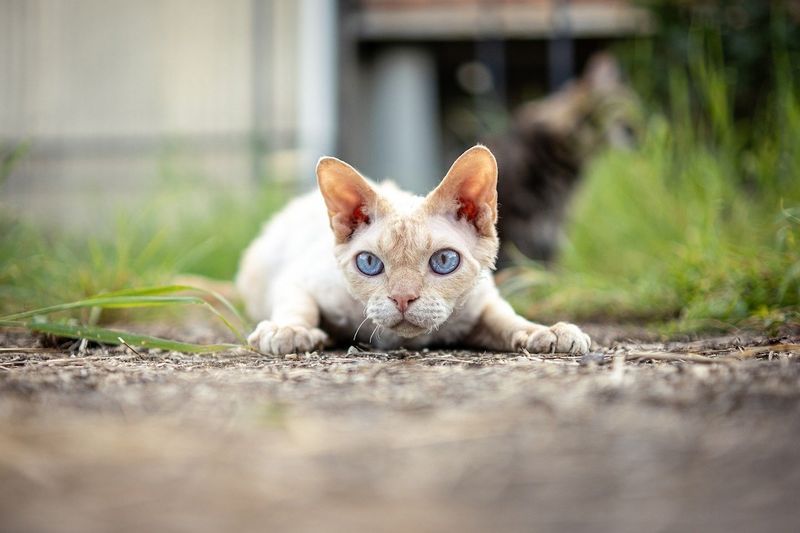📖 Table of Content:
- 1. Coat Texture
- 2. Origin Stories
- 3. Facial Features
- 4. Body Structure
- 5. Personality Traits
- 6. Grooming Needs
- 7. Temperature Sensitivity
- 8. Exercise Needs
- 9. Vocalization
- 10. Health Considerations
- 11. Lifespan
- 12. Allergy Friendliness
- 13. Child and Pet Compatibility
- 14. Popularity
- 15. Training Abilities
Curly-coated cats have captured the hearts of many, and the Devon Rex and Cornish Rex are among the most captivating of these breeds. At first glance, they may appear alike, but a closer look reveals several distinct traits that make each one special. These two breeds have their own personalities, quirks, and physical attributes that set them apart.
The Devon Rex is known for its mischievous nature and large, expressive eyes, while the Cornish Rex is recognized for its elegant, slender build and high energy. Despite both having curly coats, their fur texture and structure differ significantly, contributing to their unique appearances. Understanding these differences can help future cat owners make an informed choice about which breed suits their lifestyle.
Whether it’s the Devon Rex’s affectionate demeanor or the Cornish Rex’s playful antics, each breed offers something special to cat lovers. By delving into the 15 key differences, it becomes clear what makes these cats stand out in their own right. Explore the characteristics that define each breed, and gain insight into the delightful world of curly-coated felines.
1. Coat Texture
Devon Rex cats possess a unique coat texture that is soft and wavy. Their fur lies in loose curls that are often described as feeling like soft suede. In contrast, the Cornish Rex’s coat is even more distinct. It features tight, neat waves that run in organized rows, giving them a silky appearance.
The difference in coat texture is one of the most remarkable aspects distinguishing the two breeds. While both are low-shedding, the Devon Rex requires less grooming due to its shorter, less dense coat. These unique textures make them a favorite among cat lovers.
2. Origin Stories
First discovered in Devonshire, England, in the 1960s, the Devon Rex was born from a natural mutation that created its signature curly coat. In a similar way, the Cornish Rex, which traces its roots to Cornwall, England, was bred in the 1950s after a separate genetic mutation occurred.
These captivating origin stories highlight the serendipitous nature of these breeds’ developments. Both breeds share a common theme of rare genetic mutations that resulted in their charming appearances. Their English origins add a touch of historical intrigue to their allure.
3. Facial Features
Known for its elfin features, the Devon Rex has large, low-set ears and high cheekbones that contribute to its playful, impish look. Its face exudes a unique charm, drawing people to it. In contrast, the Cornish Rex’s large ears are positioned higher, giving it a more refined, regal appearance. The oval eyes of the Cornish Rex further enhance its alert, intelligent expression.
These facial features contribute to their unique personalities. The Devon’s mischievous look contrasts with the Cornish’s elegant demeanor, offering a variety of appearances to suit different aesthetic preferences.
4. Body Structure
When it comes to body structure, the Devon Rex and Cornish Rex have noticeable differences. The Devon Rex has a compact, muscular body that is surprisingly sturdy. Its chest is broad, and its neck is robust. In contrast, the Cornish Rex is more slender and long-legged, with a graceful, athletic build.
Its body is often compared to that of a greyhound. These differences in body structure are not just aesthetic; they also influence the cats’ agility and movement. Both breeds are agile, but their distinct builds give them different capabilities and charm.
5. Personality Traits
Outgoing and playful, Devon Rex cats are always ready to entertain and engage with their owners. Known for their “dog-like” sociability, they thrive on human interaction and enjoy being the center of attention. Their easygoing nature makes them highly adaptable to various living situations.
On the other hand, Cornish Rex cats are equally sociable but have a more sophisticated demeanor. They are known for their curiosity and intelligence, often engaging in interactive play. While both breeds are affectionate and lively, the Devon’s playfulness contrasts with the Cornish’s inquisitive nature, providing unique companionship options.
6. Grooming Needs
Grooming needs differ between these two curly-coated breeds. The Devon Rex requires minimal grooming due to its short, sparse coat. An occasional wipe with a damp cloth is often sufficient. However, the Cornish Rex’s denser curls benefit from regular gentle brushing to maintain their neat appearance.
Both breeds are generally low-maintenance compared to long-haired breeds, but understanding their specific grooming needs ensures they remain comfortable and healthy. Regular grooming sessions also provide an opportunity to bond with these affectionate cats, reinforcing their trusting relationship with their owners.
7. Temperature Sensitivity
Both the Devon Rex and Cornish Rex have short coats that make them more sensitive to cold temperatures than other breeds. The Devon Rex, with its sparse fur, is especially prone to feeling chilly and often seeks warmth from cozy blankets or sunny spots.
Similarly, the Cornish Rex, despite its dense curls, can also be sensitive to the cold. Owners are advised to provide warm bedding and create a draft-free environment, particularly during colder months. These cats’ sensitivity to temperature underscores the need for attentive care to ensure their comfort.
8. Exercise Needs
With high energy levels, both the Devon Rex and Cornish Rex require regular exercise to keep their spirits up. The Devon Rex is especially energetic, often starting playtime and exploring its surroundings. Interactive toys and challenging games are perfect for engaging its natural agility.
The Cornish Rex, while equally energetic, prefers structured playtime and enjoys learning tricks. Providing stimulating toys and engaging activities helps meet their exercise needs. These playful breeds thrive in environments that offer ample space to explore, ensuring they remain physically active and mentally stimulated.
9. Vocalization
Devon Rex cats are known for their charming vocalizations. They often communicate with soft, trilling sounds, engaging owners in conversation. These vocal interactions are part of their charismatic nature. Cornish Rex cats, while also vocal, tend to be quieter than their Devon counterparts. Their vocalizations are more subdued and reserved, reflecting their dignified demeanor.
Understanding these vocal differences can help potential owners choose a breed that aligns with their preferences for noise levels in the home. Both breeds, however, are known to be responsive and communicative with their families.
10. Health Considerations
While both the Devon Rex and Cornish Rex are generally healthy cats, they are not without their genetic health concerns. Devon Rex cats may face hereditary myopathy, a condition that impacts their muscles. Meanwhile, Cornish Rex cats are more vulnerable to patellar luxation, a disorder that affects the knee joints.
Regular veterinary check-ups are crucial to monitor their health. Providing a balanced diet and ensuring they receive necessary vaccinations and preventive care helps maintain their overall well-being. Prospective owners should be aware of these health considerations to provide the best possible care for their feline companions, ensuring a long and healthy life.
11. Lifespan
The Devon Rex and Cornish Rex both enjoy relatively long lifespans, often living between 12 to 15 years. With proper care, some individuals can live even longer. Their longevity is a testament to their robust health and adaptability.
Owners can contribute to their cats’ long, healthy lives by providing a nutritious diet, regular exercise, and routine veterinary care. These breeds’ extended lifespans allow for many years of companionship and joy. Understanding their potential longevity helps owners prepare for a long-term commitment to their well-being and happiness.
12. Allergy Friendliness
Often recommended for those with allergies, both the Devon Rex and Cornish Rex have a special coat texture that limits the amount of dander they produce. This makes them an ideal choice for individuals who suffer from mild allergies. Their hypoallergenic traits make them stand out among other breeds.
However, potential owners need to spend time with these cats before making a decision, as individual reactions can vary. While no cat is entirely hypoallergenic, both breeds offer a promising option for those looking to enjoy feline companionship without severe allergic reactions. Their allergy-friendly nature adds to their appeal.
13. Child and Pet Compatibility
With their friendly and adaptable personalities, Devon Rex and Cornish Rex cats make wonderful companions for families with children and other pets. Their playful and patient demeanor allows them to form strong bonds with young kids and other animals. Both breeds excel in a lively, social environment.
The Devon Rex’s lively spirit makes it a favorite among energetic children, while the Cornish Rex’s curious nature endears it to both kids and other pets. These breeds thrive in interactive and social environments, enriching family life with their affectionate presence. Their compatibility ensures harmonious relationships within diverse households.
14. Popularity
Over the years, both the Devon Rex and Cornish Rex have gained popularity, each with a dedicated group of admirers. The Devon Rex’s playful and charming personality has made it a top choice for those seeking an engaging and interactive pet. In contrast, the Cornish Rex’s sleek appearance and sharp intelligence have won over fans across the globe.
Both breeds are regular features at cat shows, where their unique characteristics are celebrated. Their growing popularity underscores their broad appeal and the joy they bring to their owners. Choosing between them often depends on personal preference and lifestyle compatibility.
15. Training Abilities
Both the Devon Rex and Cornish Rex are highly trainable due to their intelligence and eagerness to interact with people. Devon Rex cats are quick learners and enjoy performing tricks for treats, making them a delight to train. Cornish Rex cats are equally adept at training, often excelling in activities that involve agility and problem-solving.
Positive reinforcement techniques work well with both breeds, encouraging them to showcase their skills. Their trainable nature not only provides mental stimulation but also strengthens the bond between the cat and the owner, highlighting their cooperative and playful spirits.
